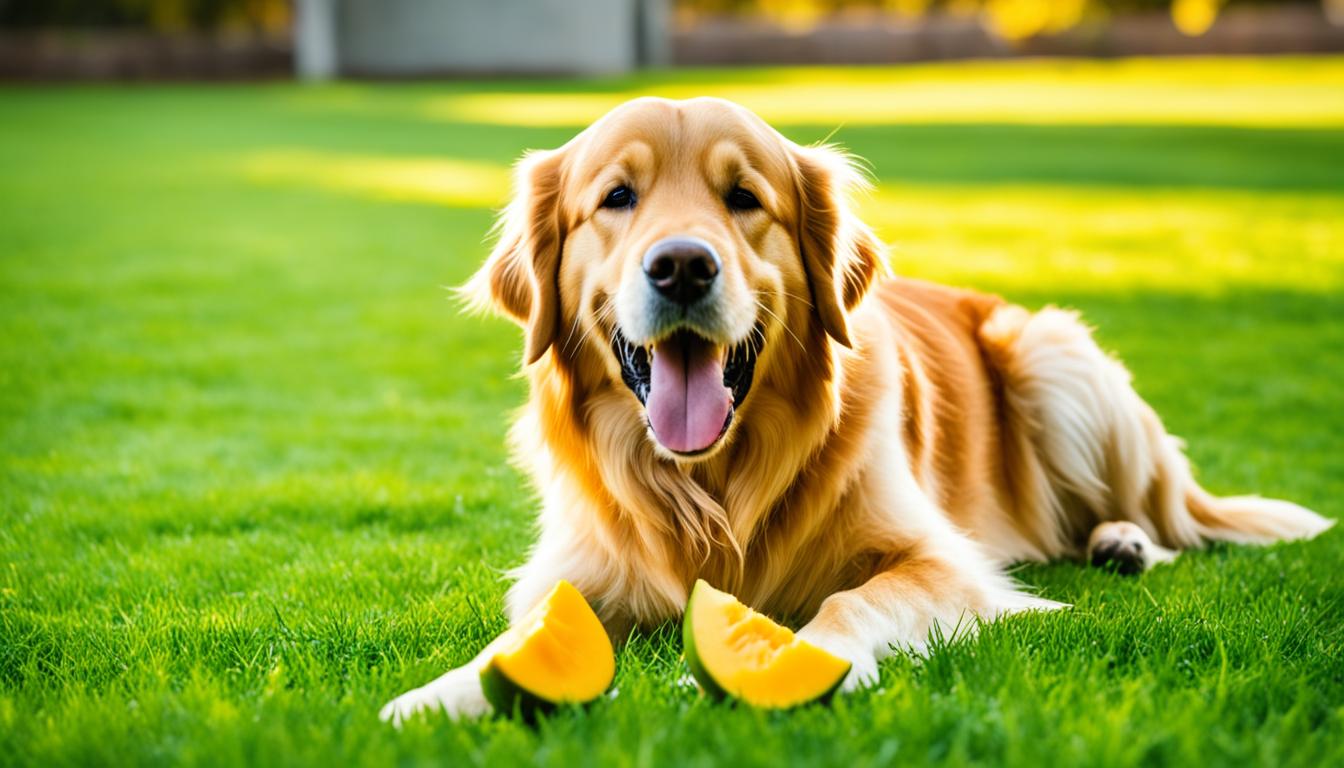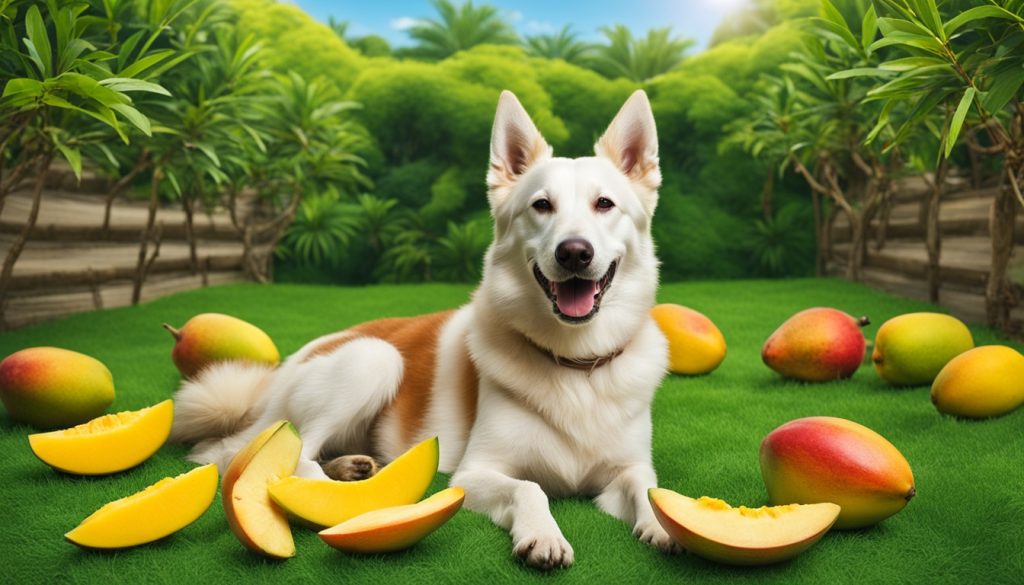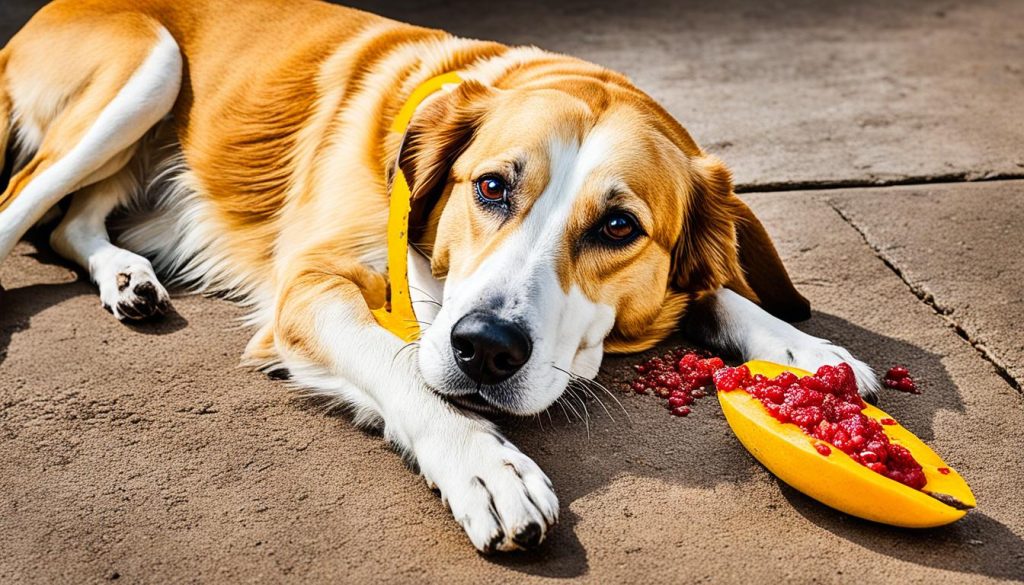Can Dogs Eat Mango? A Guide to Feeding Mangoes Safely.
Discover the dos and don’ts of feeding your dog mangoes. This guide offers safe practices for sharing this sweet treat with your pup.

Wondering if mangoes are safe for your furry friend? The good news is, yes, dogs can eat mango! This delicious fruit can provide some nutritional benefits to your canine companion. Mangoes are packed with vitamins A, B6, C, and E, along with fiber, making them a healthy addition to your dog’s diet.
However, it’s important to feed mangoes to your dog in moderation and take certain precautions. One potential risk is the pit, which can pose a choking hazard. Be sure to remove the pit before offering mango to your dog. Additionally, some dogs may experience digestive issues if they consume too much mango or have a sensitive digestive system.
To safely incorporate mango into your dog’s diet, it’s crucial to understand the correct way to feed mangoes to dogs. You’ll also want to be aware of the appropriate portion sizes for different dog sizes and breeds. Next, we’ll explore the benefits of mango for dogs, potential risks and hazards, how much mango you can give your dog, and how to properly feed mango to your furry friend.
Understanding the Benefits of Mango for Dogs
Mangoes offer several benefits for dogs due to their nutritional content. They are a good source of vitamins A, B6, C, and E, which are important for maintaining a dog’s overall health. These vitamins play various roles in a dog’s body, supporting their immune system, promoting healthy skin and coat, and aiding in digestion. The sweet, tangy fruit not only satisfies a dog’s taste buds but also provides them with vital nutrients.
Vitamins A, B6, C, and E found in mangoes are essential for a dog’s well-being. Vitamin A helps support healthy vision and immune function. Vitamin B6 is important for brain development and hormone regulation. Vitamin C acts as an antioxidant, supporting the immune system, reducing inflammation, and promoting collagen synthesis. Vitamin E is crucial for healthy skin and coat, as well as for protecting cells from oxidative damage.
The Role of Fiber in a Dog’s Diet
Fiber is an important component of a dog’s diet, and mangoes are a great source of dietary fiber. Fiber aids in maintaining a healthy digestive system, promoting regular bowel movements, and preventing constipation. It also helps regulate blood sugar levels and can contribute to a feeling of fullness, which can be beneficial for dogs on a weight management plan. Including mangoes in your dog’s diet can help ensure they receive an adequate amount of dietary fiber.

Can Dogs Eat Mango Without Risks?
While mangoes can be safe for dogs to eat, it’s important to be aware of the potential risks and dangers associated with feeding mangoes to your furry friend. These risks primarily revolve around the pit of the mango and the potential for digestive issues.

The pit of the mango poses a choking hazard to dogs if swallowed, making it crucial to remove it before offering mango as a treat. Dogs may be curious and attempt to consume the whole fruit, so it’s essential to ensure that they only have access to the flesh of the mango.
Furthermore, some dogs may experience digestive issues if they consume too much mango or if they have a sensitive digestive system. While mangoes are generally safe and nutritious, moderation is key to prevent any gastrointestinal discomfort or upset for your canine companion.
If you notice any adverse reactions in your dog after consuming mango, such as vomiting, diarrhea, or discomfort, it’s important to consult with your veterinarian for proper assessment and guidance.
Potential Hazards of Mangoes for Dogs
Mangoes can present various hazards for dogs, including the choking hazard of mango pits. The pit of the mango is large and hard, posing a risk if swallowed by dogs. It is important to remove the pit before offering mango to your dog to prevent choking incidents. In addition to the choking hazard, mango pits contain small amounts of cyanide compounds, which can be harmful if ingested in large quantities. Cyanide is a toxic substance that can cause digestive issues and even lead to cyanide poisoning in dogs. It is crucial to ensure that dogs do not consume mango pits or any other parts of the fruit that contain cyanide compounds.

Recognizing Potential Allergic Reactions
Some dogs may also have allergic reactions to mangoes. Allergies can manifest in various ways, including itching, swelling, rashes, or difficulty breathing. If your dog exhibits any unusual symptoms after consuming mango, it is recommended to seek veterinary assistance to rule out an allergic reaction and to receive appropriate treatment. It is important to be aware of these hazards and take necessary precautions when feeding mangoes to your dog. By avoiding the pits, monitoring for digestive issues, and being vigilant for any signs of allergies, you can ensure the safety and well-being of your furry friend.
Moderation is Key: How Much Mango Can I Give My Dog?
While mangoes can be a healthy addition to a dog’s diet, it is important to feed them in moderation. Mango should make up only a small portion of a dog’s overall diet, with the majority consisting of balanced dog food. Feeding mango to dogs in moderation ensures that they receive the nutritional benefits of the fruit without overindulging.
The appropriate portion size for a dog depends on their weight and breed. As a general guideline, smaller dogs should be given smaller portions of mango compared to larger dogs. It is always best to consult with your veterinarian to determine the specific portion sizes for your dog.
Feeding mango in moderation not only prevents overconsumption but also helps avoid any potential digestive issues that excess fruit intake might cause. Dogs have different dietary needs, and their overall nutritional balance should be prioritized. Mango can be a nutritious treat, but it should not replace the essential nutrients provided by their regular dog food.
How to Feed Your Dog Mango
Properly preparing and serving mango to your dog is essential to ensure their safety and enjoyment. Follow these guidelines to feed mango to your canine companion:
Before offering mango to your dog, start by thoroughly washing the fruit. This helps remove any dirt or pesticides that may be present on the skin. Then, using a knife, carefully peel the mango to remove the outer skin. Make sure to remove all traces of skin as it can be difficult for dogs to digest. Once the mango is peeled, you will need to remove the pit. Cut around the pit, creating two halves of the fruit. From there, you can slice the mango into small, bite-sized pieces for your dog to enjoy.
Handling Mango Skin and Seed Safely
When handling mangoes, it’s important to practice proper hygiene and dispose of the skin and seed safely. Mango skin and the pit can pose a choking hazard to dogs, so it’s crucial to ensure they are kept out of reach. Discard the skin and seed in a covered trash bin or compost pile where your dog cannot access them. This prevents your dog from accidentally ingesting any parts of the mango that may pose a risk.
Ideas for Serving Mango to Your Canine Companion
There are several ways you can serve mango to your dog:
- Feed it raw: After preparing the mango as described above, you can offer small pieces of the fruit directly to your dog. This allows them to enjoy the natural sweetness and chewiness of the mango.
- Mash it into their food: If your dog is a picky eater or needs some encouragement to eat their regular food, you can mash some mango into their meal. This adds flavor and moisture to their food, making it more appealing.
- Freeze it as a treat: Create a refreshing and nutritious treat for your dog by freezing small pieces of mango. This is especially great for hot summer days when your dog needs something cool to enjoy.
- Incorporate it into homemade dog-friendly recipes: Mango can be a tasty addition to homemade dog treats or even mixed into homemade dog ice cream. Just make sure to use dog-safe ingredients and avoid any potential allergens.
Integrating Fruits into Your Dog’s Balanced Diet
Mangoes can be a delightful addition to your dog’s diet, offering both taste and nutritional benefits. While it’s important to remember that fruits should be given in moderation, mangoes can complement a well-rounded and balanced diet for dogs.
Fruits, including mangoes, can provide dogs with a range of vitamins, minerals, and antioxidants, enhancing their overall health and well-being. However, it’s crucial to understand that fruits should not replace a dog’s primary source of nutrition, which should come from a high-quality, balanced dog food.
When incorporating fruits into your dog’s diet, including mangoes, consult with your veterinarian first. They can provide guidance specific to your dog’s individual needs, taking into account their age, breed, size, and any existing health conditions. It’s important to ensure that the introduction of fruits, including mangoes, does not disrupt the balance of nutrients in your dog’s diet.
FAQs on Can dogs eat mango
What are the benefits of mango for dogs?
Mangoes are rich in vitamins A, B6, C, and E, as well as fiber, which are important for a dog’s overall health.
Are there any risks in feeding mangoes to dogs?
Yes, there are potential risks such as the choking hazard of the pit and the possibility of digestive issues.
What are the hazards of mangoes for dogs?
The pit of the mango can pose a choking hazard, the cyanide compounds can be harmful if ingested in large quantities, and some dogs may be allergic to mangoes.
How much mango can I give my dog?
Mango should only make up a small portion of a dog’s overall diet, and the appropriate portion size depends on their weight and breed.
How do I feed mango to my dog?
Mangoes should be thoroughly washed, peeled, and the pit removed. The fruit can be served raw, mashed, frozen, or incorporated into homemade dog-friendly recipes.
Can mango be a part of a balanced diet for dogs?
Mangoes, along with other fruits, should be offered as a treat rather than a staple food, and the majority of a dog’s nutrients should come from a well-balanced dog food.





